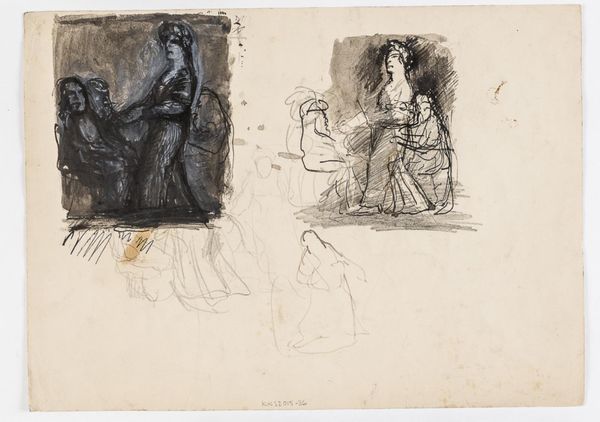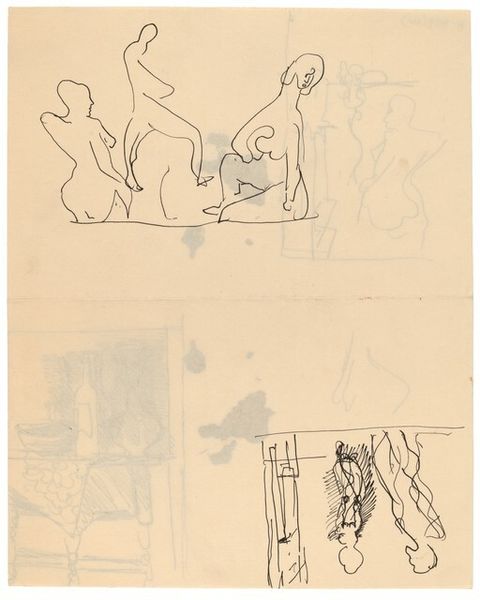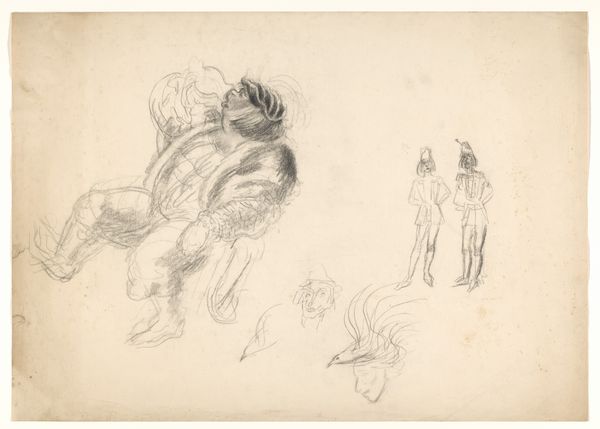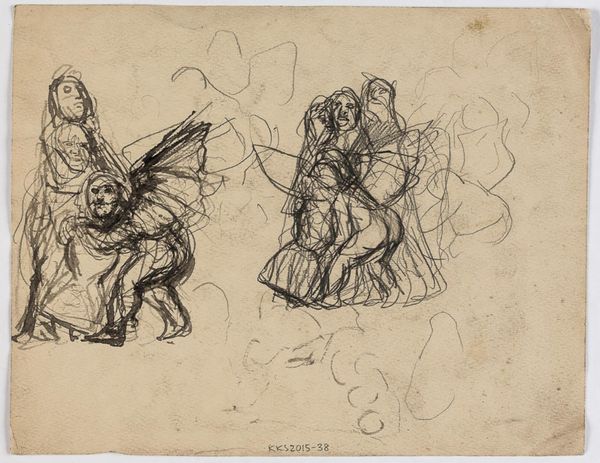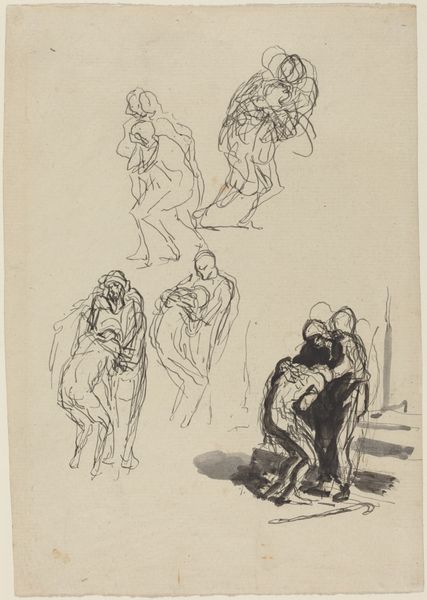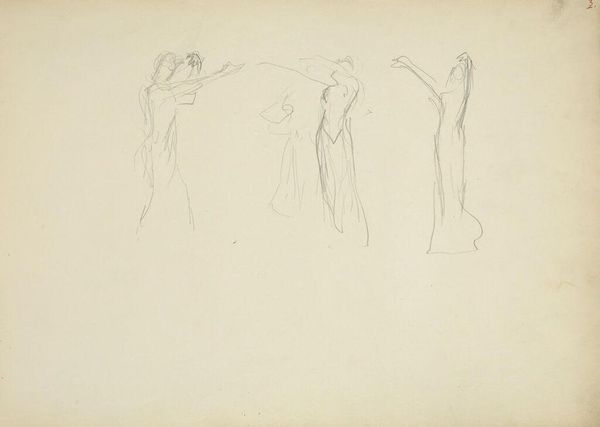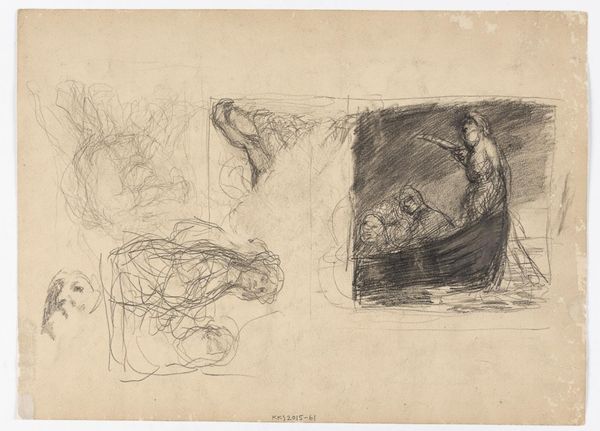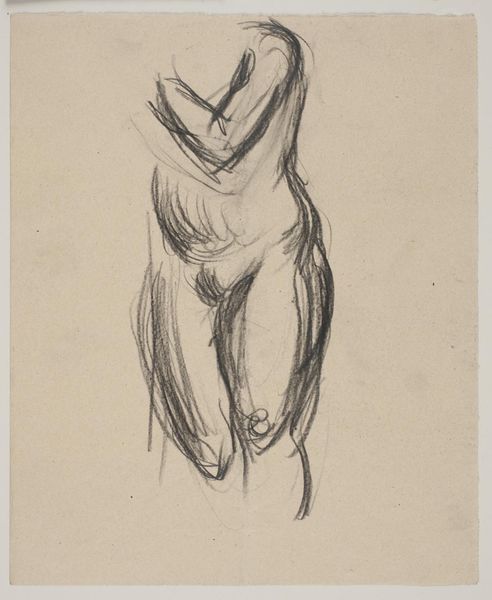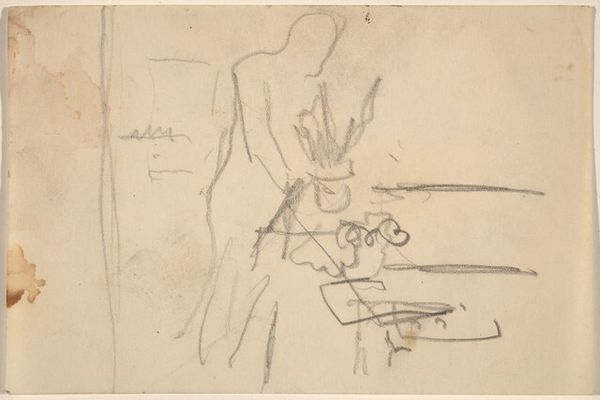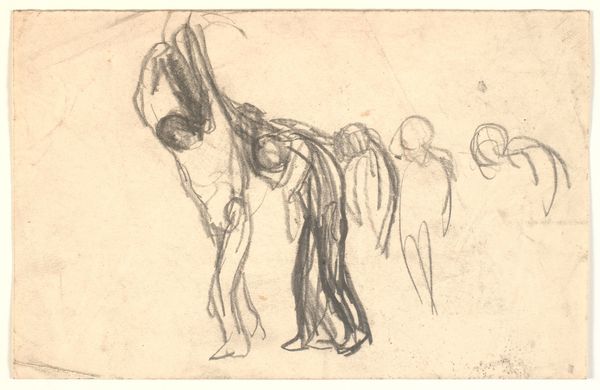
drawing, ink
#
drawing
#
figuration
#
ink
#
academic-art
#
nude
Dimensions: 374 mm (height) x 268 mm (width) (bladmaal)
Curator: Welcome. Before us, we have Oluf Hartmann's “Tre kompositionsstudier," created sometime between 1879 and 1910. It's currently residing here at the SMK, Statens Museum for Kunst. Ink on drawing paper. Three studies, really. Editor: And what strikes me immediately is the apparent discomfort in these figures. Are they wrestling with some inner turmoil, or perhaps the constraints of the page itself? Curator: Hartmann certainly was invested in form, volume, and finding the balance. Look closely—how the ink is layered to build depth within those confined rectangular spaces he's given them. Editor: You know, seeing these figures presented in this fragmented, almost scientific way makes me consider the production of academic art. Think about the reams of paper, the constant grind of perfecting the human form, the labor-intensive quest for "ideal" representation… Curator: There's an intimacy here too, though, wouldn't you say? They are not polished works ready for grand exhibition. These figures seem caught in private, exploratory moments. The subtle shades rendered by the ink, almost breathing. Editor: Precisely, these raw figures seem to underscore that very act of *making*. Hartmann's commitment to observation, recording, and documenting this process exposes the work behind the work. It demystifies that "ideal" we mentioned earlier, replacing it with the honest effort to understand the subject's underlying materials. Curator: Perhaps that's why these studies hold a greater charm. They are transparent, vulnerable—the striving visible on the surface. Think about the figure sketched almost absentmindedly in the background on the left—so ghostlike! He wasn’t afraid to leave process exposed. Editor: And how do you think this materiality speaks to us today? We're saturated with images—perfected, smoothed over, rendered by algorithms. Here, we’re asked to confront something unfinished, to celebrate the material reality of artmaking and it's inherent flaws and struggles. Curator: Exactly. It becomes almost a mirror, inviting us to find beauty not in perfection, but in our own process of becoming. To make peace with the lines of our lives not always cleanly drawn. Editor: A fittingly human moment indeed. It reminds us that sometimes the beauty lies not in the finished object but the messy and beautiful labor that produced it. Curator: And in those small, in-between sketches where an artist, just like us, finds his way.
Comments
No comments
Be the first to comment and join the conversation on the ultimate creative platform.

